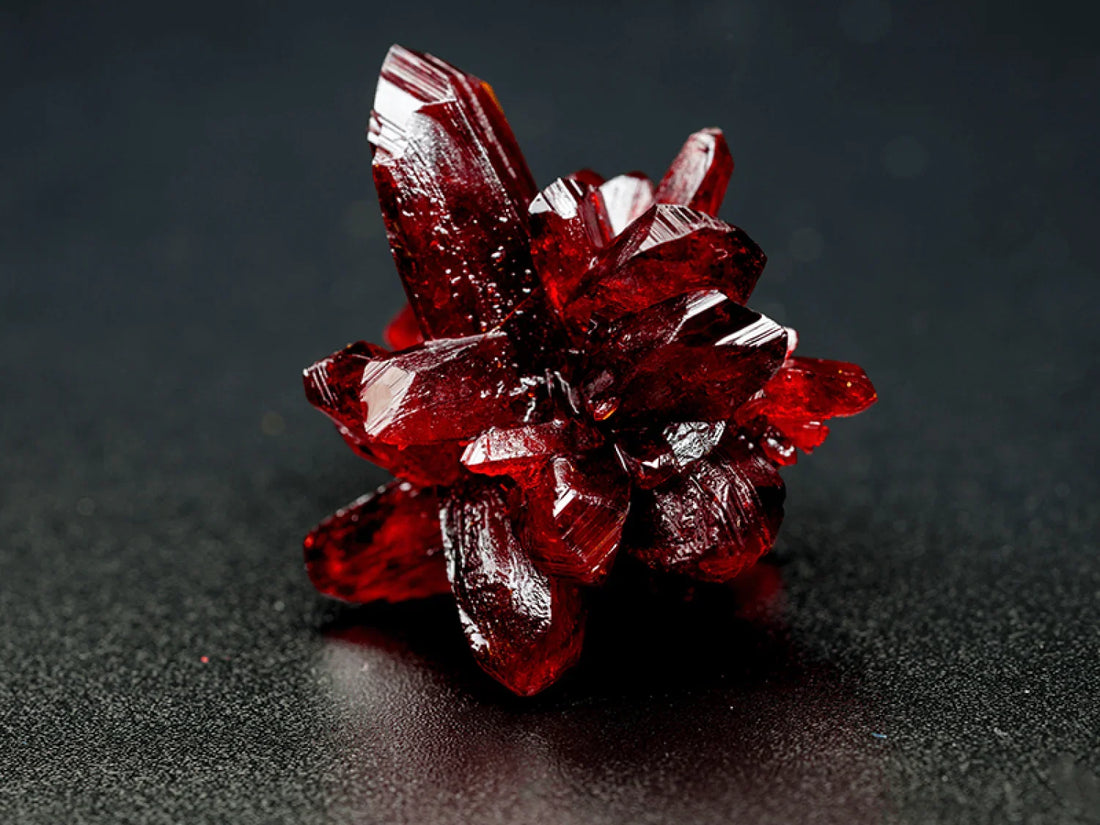This article explores the world of ruby and sapphires, including the different varieties, their history and cultural significance, and about their healing and medicinal properties. We'll also cover how to care for and recharge your sapphire, if you choose to own one.
Corundum Gemstone
Rubies and sapphires are renowned for their stunning beauty and come in a surprising variety, with over 40 different types identified. You might come across the term 'corundum' used to describe rubies and sapphires, highlighting their value as gemstones. However, it's important to note that not all corundums are of gem quality, meaning they wouldn't be suitable for cutting and polishing into jewelry.
Classification of Gem Corundum by Color
- Red (Ruby)
- Pink
- Blue (Sapphire)
- Padparadscha (Pinkish Orange)
- Green
- Yellow
- Colorless

The Best Gem Corundums Mines
The best sapphire mines are located in Kashmir (India), Bangkok, and Burma.
The most authentic ruby mine is in Cowee, North Carolina, and a similar and larger type found in Burma.
Classification of Gem Corundum by Region
- Arizona Ruby
- Ceylon (Sri Lankan) Ruby
- Siberian Ruby
- Afghan Ruby
- Siamese Sapphire (Thai Sapphire)
- Australian
- American
The noblest type of gem corundum in terms of color is the red ruby, as it brings joy and enhances innate warmth.
Corundum Stone
Deep within the Earth, scorching temperatures and immense pressure cook up a dazzling treasure: gem-quality corundum, the mineral behind rubies and sapphires. Molten rock or extreme heat during rock transformations can create the perfect environment for corundum crystals to form. Even limestone can play a role, as aluminum-rich impurities within it can concentrate and crystallize into corundums. While some deposits might be left untouched, others are valuable enough to mine, with traditional methods used for certain types of deposits and modern techniques employed for large-scale extraction.
While diamond may be harder than ruby, it can be confidently said that gem corundum encompasses a variety of qualities—such as diversity, hardness, beauty, colors, phenomena (cat's eye, star), luster, and other attributes recognized by gemologists worldwide as characteristics of an excellent gem.
Gem Corundum and Scientific Findings in the Field of Lasers
Laser stands for "Light Amplification by Stimulated Emission of Radiation." Simply put, a laser beam is created when electrons excited to higher orbits return to their original states. Scientifically, a laser is a device that uses the energy stored in atoms or molecules to produce powerful beams of visible light.
Laser beams are derived from ammonia, chromium-doped ions, ruby, and agate. It can be said that technological advancement is impossible without lasers, and the study of laser physics is the most crucial part of atomic physics.
Gem Corundum Benefits
- Removal of poverty
- Alleviation of distress
- Nobility and honor
- Recording good deeds

Healing Properties of Gem Corundum
The temperament of red ruby is warm and dry.
Ruby is mentioned as a cause of plague prevention.
Due to its structural and magnetic properties, it strengthens blood circulation, prevents blood clotting, and helps prevent strokes and heart diseases.
Liver tonic (invigorating).
Placing ruby in the mouth relieves thirst and remains cool in the mouth.
Carrying it constantly makes a person look majestic and dignified .
Looking at it increases eye brightness.
Arab and Persian sages say it relieves stomach discomfort and gives strength and energy to the brain.
Life becomes easier with it.
Improves kidney function.
Cancer treatment.
Improves joint pain and post-surgical pain.
Strengthens the immune system.
Treats gout.
Clears facial acne and skin sensitivity.
Considerations
No specific limitations have been observed in the use of this gemstone.
Maintenance and Charging
Charging Red Ruby:
Wash it in flowing water for half an hour once or twice a month to discharge it, then expose it to sunlight for two hours to recharge.
Charging Blue Sapphire:
To discharge the gemstone, place it in dry sea salt for an hour, then expose it to sunlight for charging for another hour.
External Sources
- What is Corundum and What are its Basic Qualities?
- Ruby Crystal Meaning: Healing Properties, Uses, & Benefits
- Sapphire Meaning: Healing Properties, Uses, & Benefits
Have you ever owned a ruby or sapphire? Share your experiences in a review and help others learn more about these beautiful gemstones.



